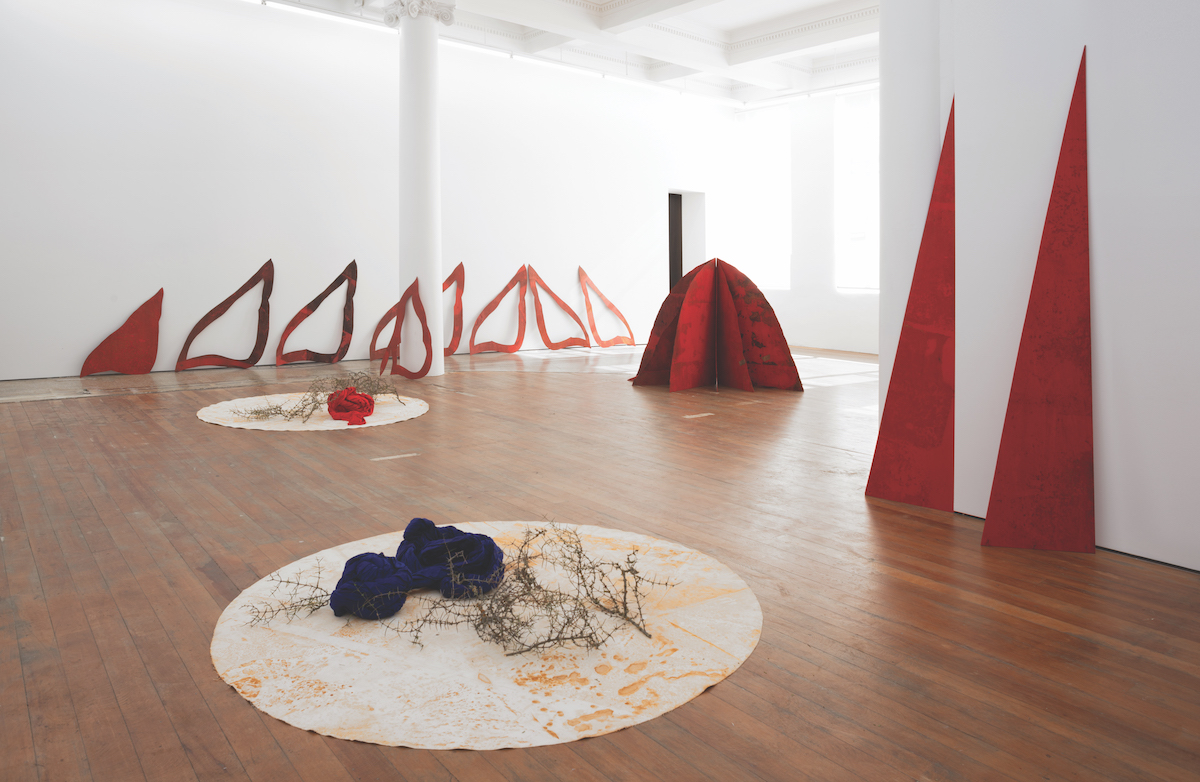Words: Lucinda Bennett
Photography: Alex North
It is difficult for an institution to collect a work by Canterbury artist Pauline Rhodes. As Adam Art Gallery curator Christina Barton explains in her 2002 monograph Ground/Work: The Art of Pauline Rhodes, this artist’s practice has always been against the kind of permanence suggested by a collection, with her works often comprising temporary installations shown outside expected art contexts. These works, for which she is best known, are named extensums, describing the way they often manifest as minimal, ephemeral outdoor installations that work to extend space.
There is, however, another slightly more collectable node to her practice. Her intensums, such as Pleasure and Pain (1980– 2019), are installations that work to intensify the space they occupy and tend to be assembled within a gallery. In 2020, Auckland Art Gallery Toi o Tāmaki has been able to add a work by Rhodes to its collection, having purchased her installation Pleasure and Pain in its entirety. When it was shown at Michael Lett Gallery in 2019, Pleasure and Pain did indeed intensify the gallery experience through introducing an opulence of arterial red into the space. Large, splintery red plywood forms leaned against the walls and blossomed out from the floor, appearing like flames, mountains, rusted sheets of corten steel or the flushed internal walls of the body.
The gallery became baroque, carnal, ritualistic, biblical. Dried, savage-looking cuttings of matagouri were scattered around the space, resting upon circles of creamy cloth marbled with faint, grisly rust-coloured stains. To enter the gallery was to remember pleasure and pain together.
All of this is not to say that Rhodes extensums cannot be conjured in the gallery at all. In 2018, she exhibited at CoCA for the 12th time in her lengthy career. For Time Ongoing, Rhodes displayed new site-specific works that dealt with notions of environment and place, material, ecology, and time, alongside a newly digitised archive of documentation spanning four decades. As Tony Green explains in a 2001 Art New Zealand feature, “When exhibited, the photo- graphs [of outdoor pieces usually seen only by the artist] tend to take on the character of artworks, compositions of land and the objects placed there.” Aptly titled, Time Ongoing extended the lives of these impermanent works, acknowledging the way they live on through the archive, the photographs becoming artworks in and of themselves.
Perhaps Time Ongoing kicked up the leaves around Rhodes and reminded everyone of her work’s ongoing relevance, for she seems to be having a renaissance of appreciation. As well as the recent Auckland Art Gallery acquisition, Rhodes opened another solo exhibition at Christchurch Art Gallery Te Puna o Waiwhetū in November 2020. Blue Mind is described as “an immersive and open-ended sculptural response to colour and space”, one that gathers motley materials from across the years of Rhodes’ practice and employs them to new ends, encouraging viewers to meditate upon vulnerability, fluidity and, of course, impermanence.
This article was originally published in Art Collector issue 95, January to March 2021.








